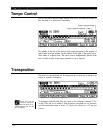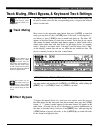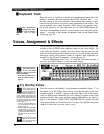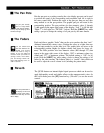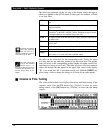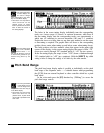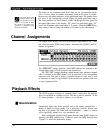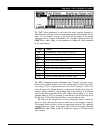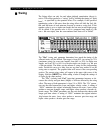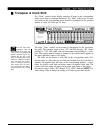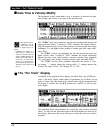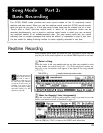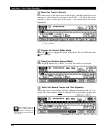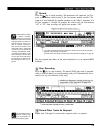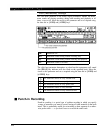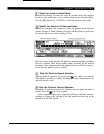
Swing
The Swing effect can only be used when playback quantization (above) is
active. This effect produces a “swing” feel by shifting the timing of “back
beats”,
as specified by the quantize effect. For example, if the specified
quantization value is 8th notes, then the swing effect will shift the 2nd, 4th,
6th, and 8th beats of each measure forward to create a swing feel. If the
quantize value is set to a triplet note length, the last note in each triplet group
will be shifted. If the quantize value is set to a compound note length (e.g. 8th
note + 8th note triplet), then the even-numbered back beats will be shifted.
The
"Rat"
(swing rate) parameter determines how much the timing of the
affected notes will be shifted. The range is from 50% (no swing) to 75%
(maximum swing) for even note lengths, from 66% to 83% for triplet note
lengths, and from 50% to 66% for even-plus-triplet note lengths (e.g. 8th note
+ 8th note triplet). The faders set the amount of swing for the corresponding
tracks. Position the cursor at a fader, then use any data entry method to set the
swing rate as required. The graphic fader will move to the corresponding
position. The current swing setting will appear in the upper right corner of the
display. Hold the
[SHIFT]
key while setting a fader to change the settings of
all faders by the same amount.
The
"Vlc"
(velocity) and
“Gat”
(gate time) parameters increases or de-
creases the velocity and gate times (length) of all notes affected by the swing
effect. The range of both parameters is from 1% to 200%. The “Vlc” param-
eter sets the ratio between the lower and higher velocity values. A setting of
“100%” maintains the original relationship between the notes, lower values
produce a narrower dynamic range, and higher values produce a broader dy-
namic range. The “Gat” parameter sets the ratio between the shorter and
longer gate time values. A setting of “100%” maintains the original relation-
ship between the notes, lower values produce a narrower gate time range, and
higher values produce a broader gate time range.
20



